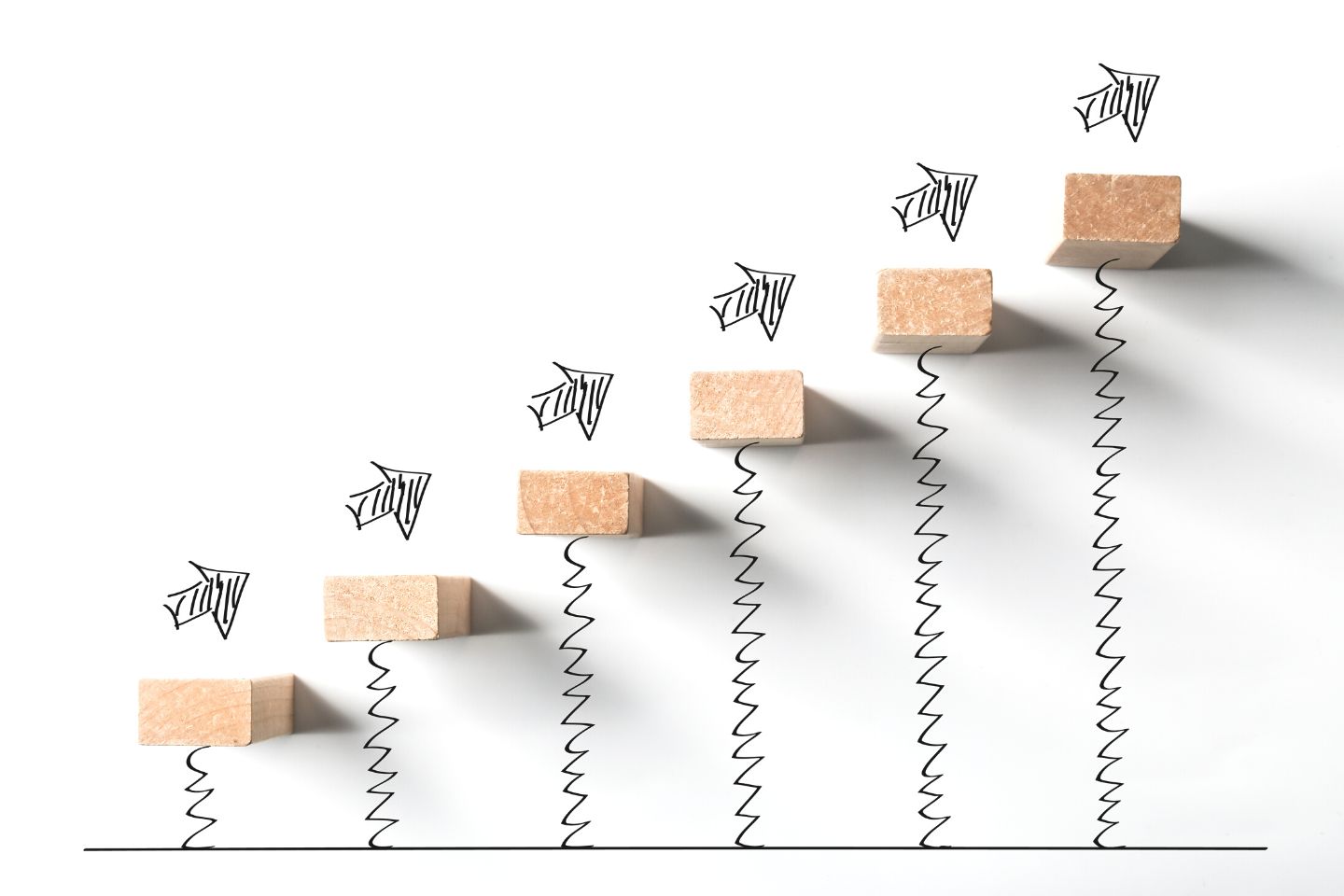When I was a beginner in my SEO journey, I was completely unaware at the time of executing the SEO tactics. Beginners often make mistakes either they are not aware of the basic SEO practices or they don’t understand them correctly. I was one of them. I failed to learn SEO basics and randomly followed bad tactics which later hinder my SEO progress.
With an overwhelming amount of resources, no proper guidance I was kind of stuck. I didn’t even realize the power of community. Later on, I joined an online community, talking with an industry expert which helps me to thrive in SEO.
My concern to every beginner who is just starting out, please go through a basic first. Follow Google SEO guidelines and don’t ever try black hat SEO techniques. Just take a baby step & slowly it will lift you to a greater level. Learn SEO fundamentals along with search engine mechanism. Simply start as a small.
In this article, I tried to dig deeper into SEO mistakes beginners often make and how to avoid them. Let’s get started.
1. Neglecting the Power of Site Structure
Site structure refers to how you organize your website’s content. It primarily deals with how content is grouped, linked and presented to the visitor.
Most beginners often make mistakes at the time of building a proper site structure. Creating too many menus, pages, categories and tags are common among newbie. Your site structure should look like a pyramid rather than a flat-file system.
Even more, ignoring breadcrumbs for easier navigation, creating too many page depth are some of the bad practices which negatively impact SEO.
As Google stated in their official website” Our mission is to organize the world’s information and make it universally accessible and useful.” You should structure your site in such a way that Google finds it useful to understand the importance of each page.
2. What are its best practices?
- Identify your primary, category, sub-category pages and then construct your site structure accordingly. Maintaining minimal page depth not more than 3 clicks is highly recommended.
- Organize your blog post simply creating categories. For instance, if you are writing SEO blogs categories could be On-page SEO, Local SEO, Technical SEO, Link Building and so on.
- Improve your internal linking structure simply linking back to topically relevant pages.
3. Wrong Keyword Selection
One of the most common SEO mistakes beginners makes is selecting keywords and neglecting the preference of search engines. They often select a broad keyword after solely relying on a search volume. Keyword research and keyword selection are one of the most crucial phases either it will make or break your SEO campaign.
Thoroughly understand the theme of a website and mapping a keyword to pages wisely is what you need to do.
4. What are its best practices?
- Defining your products and services is more important to understand what words your potential customers would use to refer to them. Prepare a keyword list, add them to google sheets and map them according to your business theme to pages.
- For a new website, choosing a long tail keyword is highly recommended though a keyword has a low search volume. Get initial traffic first. Slowly your site will build authority then you can target medium to broad keywords.
- Take your enough time for keyword research. It’s best to do your background research carefully before you start the optimization. Using tools like Google Trends, SEMrush, Ahrefs and Moz Keyword Explorer can help to put in right keyword selection.
5. Neglecting Search Intent
Search intent is the why behind a search query. In other words, why did the person make this search? Do they want to learn something? Are they looking to make a purchase? Or, are they looking for a particular website?
For instance, if you are to write an article on “How to do keyword research” you should satisfy a searcher intent like creating a step by step process on performing keyword research rather than covering a topic on keyword research tools.
Luckily, even if you are able to rank on a topic that doesn’t satisfy keyword intent, the user will bounce back within a second. Neglecting a search intent can lower a click-through rate and negatively impact your ranking.
Furthermore, let me make you clear discussing on 4 different types of Search Intent along with its best practices:
Informational Intent
- What is Keyword Research?
- History of the Great Wall
- When did Albert Einstein die?
Navigational Intent
It’s probably just quicker and easier for them to Google it than to type the entire URL into the address bar. Branded keywords all fall under navigational intent keywords.
- Google maps
- Beginners Guide to SEO Moz
- Amazon Login
Commercial Intent
- best smartphone
- ahrefs vs moz
- semrush review
- top restaurant in Kathmandu
Transactional Intent
- buy MacBook pro
- Lynda coupon
- Samsung galaxy s10 cheap
- LastPass premium price
6. What are its best practices?
- Search intent determines the type of site and content you create. Let me give you an example. One of the most popular sites wikihow which is all about how-to instructions. This site falls under informational kinds of sites. You probably will notice that the content they create is all of the informational intent.
- Likewise, if you type “buy protinex” on google, you will notice the search result with several e-commerce sites. If the keyword has informational intent, write a blog post. If it has transactional intent, create a product page. Cool, you get an idea.
7. Not outlining a content
In short, an SEO content outline is a technique of grouping all topics and subtopics you need to cover for your posts/pages. Its main theme is to be better than everything that currently ranks for the selected keyword.
8. What are its best practices?
9. Keyword Stuffing
Keyword stuffing refers to the practice of overusing/loading an intended keyword on a web page in an attempt to manipulate a site’s ranking in Google search results. Often stuffed keywords look spammy or unnatural appear in a list or group, or out of context.
When I was a beginner in SEO, I was mistaken with the use of keywords. One thing was hitting in my mind, the more you use keywords the better it will rank higher in google. That was one of the worst mistakes ever I made as a newbie.
Dear beginners don’t ever commit such mistakes. If you are reading this article, you are one of those lucky people to get precautions before starting out. Keyword stuffing not only negatively impacts your SEO, even more, but sites can also be manually removed from search engines.
10. What are its best practices?
- Pizza Ingredients you need to prepare
- Special equipment you need
- Step by step processes
11. Using copied content mindlessly

Most of the beginner’s headache is dealing with writing content. So what they choose is a shortcut. Simply copy and paste from another site and hoping to rank higher in google. My buddies, this is never going to happen. Suppose, you were cheating from classmates during final exam and all of sudden your invigilator caught you a red hand. What might be the consequence? There is no way, you will be punished for sure. Similar to Google, their algorithm can detect copied content and original source as a reason to penalize a site. Advancement of algorithm like Panda which is developed to fight against duplicate and copied content, Google is smart enough to catch a culprit.
Even more, there is a practice still exists even among experts like copying content and slightly modifying original, replacing with synonyms and so on. This type of copying makes it difficult to find the exact matching original source. Hence your site will be the real contender for manual penalty.
There are millions of blog published on a daily basis. But sadly, most of the contents doesn’t rank well in the search engine. According to a Matt Cutts who previously worked as a part of the search quality team has himself stated that duplicate content happens all over the net all the time, from blog posts to web pages and social media?
Difference between duplicate content and copied content
12. What are its best practices?
- Never ever copy content from other sites. In some cases, you can cite a source as a reference site. It avoids a copyright violation and even google to penalize you.
- Google heavily focus on E-A-T which stands for Expertise, Authoritativeness and Trustworthiness. A content which is published from a well-known expert tends to rank higher in google. Just stick on it. Make sure your content fulfils all necessary guidelines. For more insight, have a look at google search quality rater guidelines.
- For duplication issues within a site, make sure you use a canonical tag pointing to original or a preferred version of a page.
13. Improper Internal Linking
Internal linking is the practice of pointing a link from one page to another page within the same site. So using the right internal linking strategy can boost your SEO.
As a beginner the most common mistakes that many webmasters do with internal linking are:
- Not using internal linking at all
- Using too many internal links
- Linking to a topically irrelevant pages
- Not using descriptive anchor text
- Stuffing keyword-rich anchor text over & over
- Using more generic anchor text like find more, link here, here and so on
Not optimizing images
- Link to topically relevant pages
- Use descriptive/keyword-rich anchor text
- Variation in keyword-rich anchor text if you are using the same keywords over and over
- Avoid using tag clouds
- Aim to have 2-10 internal links per page (depending on the content)
- Internally link more to top-performing articles and pages you want to rank
Not optimizing images
Interactive content like images helps to improve user experience. It makes pages more interesting to read and shareable.
One of the most common mistakes beginners make is to simply download an image and upload it to its site without compromising source, size and quality. In a nutshell, you are not optimizing images according to SEO guidelines.
Here are some common mistakes you should avoid doing:
Using uncompressed images
Using Copyright images
One of the most common mistakes they make is to simply download images from other sources and use it on a site. If you are to use other source images, make sure to mention a credit or citation. Copying images illegally to your site means you are violating copyright laws and regulations.
Best Practices: There are numerous copyright-free stock images sites where you can download it and later use it in your site.
Ignoring image ALT tags
A common mistake a beginner makes is to simply leave an alt text as it is.
Using ALT tags help search engines understand what an image is about. Even more, alt text acts as a primary purpose to describe the visitor who is blind. Adding alternative text for images is the first principle of web accessibility.
Using too many images
14. Compromising Quantity Over Quality
There has been a huge debate regarding content length in the SEO community. The length of content correlates with search ranking but it doesn’t mean writing a long-form of content always does better in SERP. Quality matters where the written piece of an article should satisfy expertise, authoritativeness, and trustworthiness.
What are its best practices?
Let me give you an example. If you are writing blog posts on the topic “how to make a homemade Pizza”?. You created a step by step process on preparing pizza along with video content. There is a high probability you will be able to rank higher on google. In a nutshell, you are satisfying user intent.
15. Not optimizing site speed
If you are one of those who is ignoring optimizing for site speed, you are really missing out a massive opportunity. Google has stated that site speed is one of the ranking factors.
Some of the common mistake WordPress user makes is they don’t mind installing a huge number of unnecessary plugins and make a site speed even worse.What are its best practices?
- Boycott using an unnecessary plugin, if you are a WordPress user
- Compress images first before uploading to a site. Less than 150KB is recommended
- You can start by analyzing your website through the Google PageSpeed Insights, Pingdom, Gtmetrix and so on
16. Not actively promoting a blog posts
For instance, you shared a blog in the Facebook community, some of the bloggers liked an article you shared and they link back to your article. See, you got backlinks along with referral traffic which will directly impact on your search ranking. Promoting blog posts in similar communities is another way to build a genuine audience.
What are its best practices?
- Share your content to social media and another online platform like Quora, Reddit, medium, LinkedIn and so on
- Write a guest post and publish it in an authoritative website and link it to your post.
- You can even use Facebook Ads to promote your posts to a predefined targeted audience
17. Not publishing content consistently
What are its best practices?
Have a plan for how many times you are likely to publish new content and make a solid content calendar. After publishing share your content to your predefined audience.
18. Neglecting Google Search Console & Google Analytics
Unlike, keyword stuffing that worked over the past years is long gone. Learning from the past and analyzing results at present, taking strategic steps is what you need to improve your SEO.
What are its best practices?
For instance, internal linking from a new article to a top-performing article, creating more backlinks can help to improve ranking. You can use free tools from Google such as Google Analytics and Google Search Console to help collect and analyze data.


